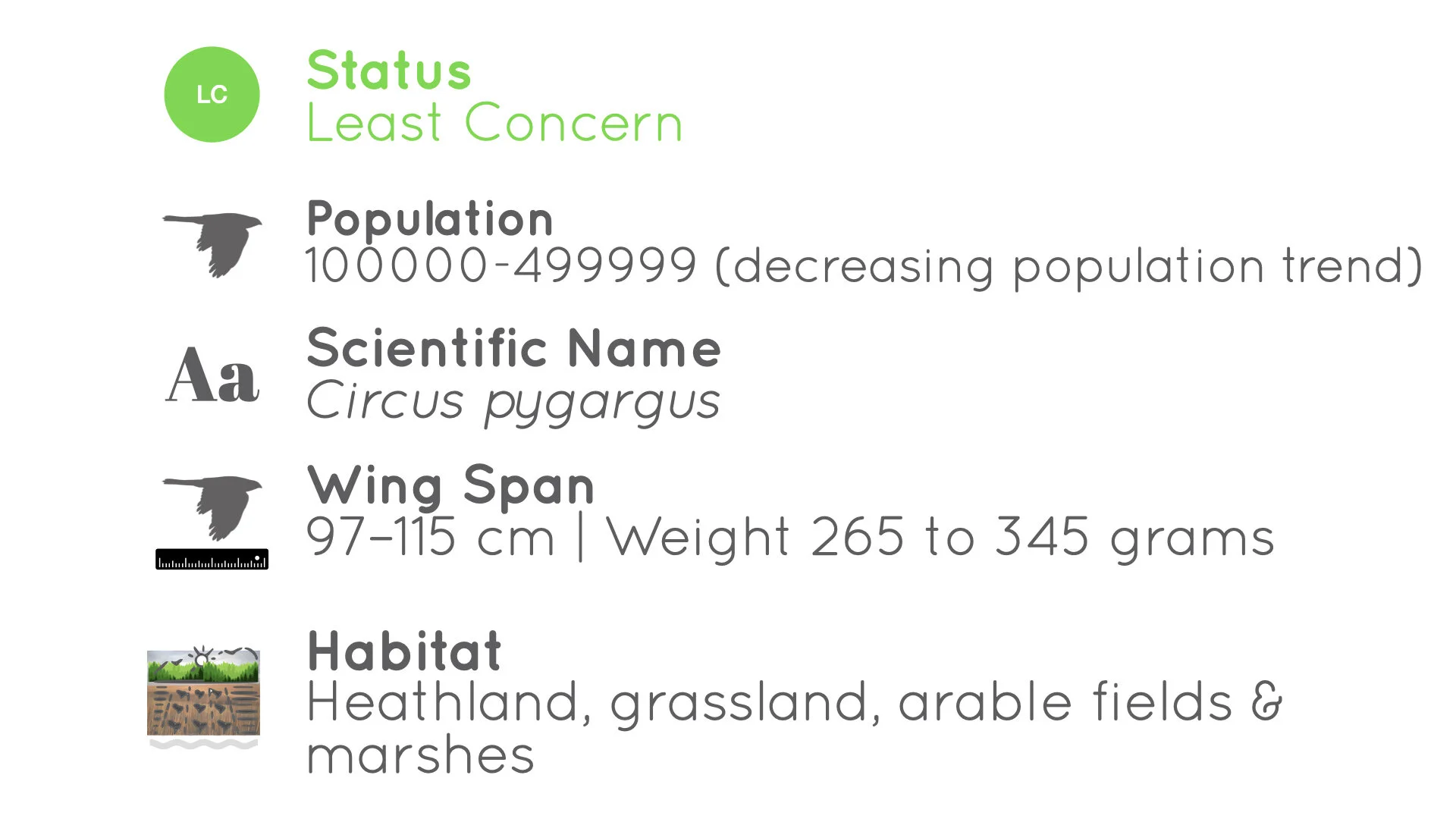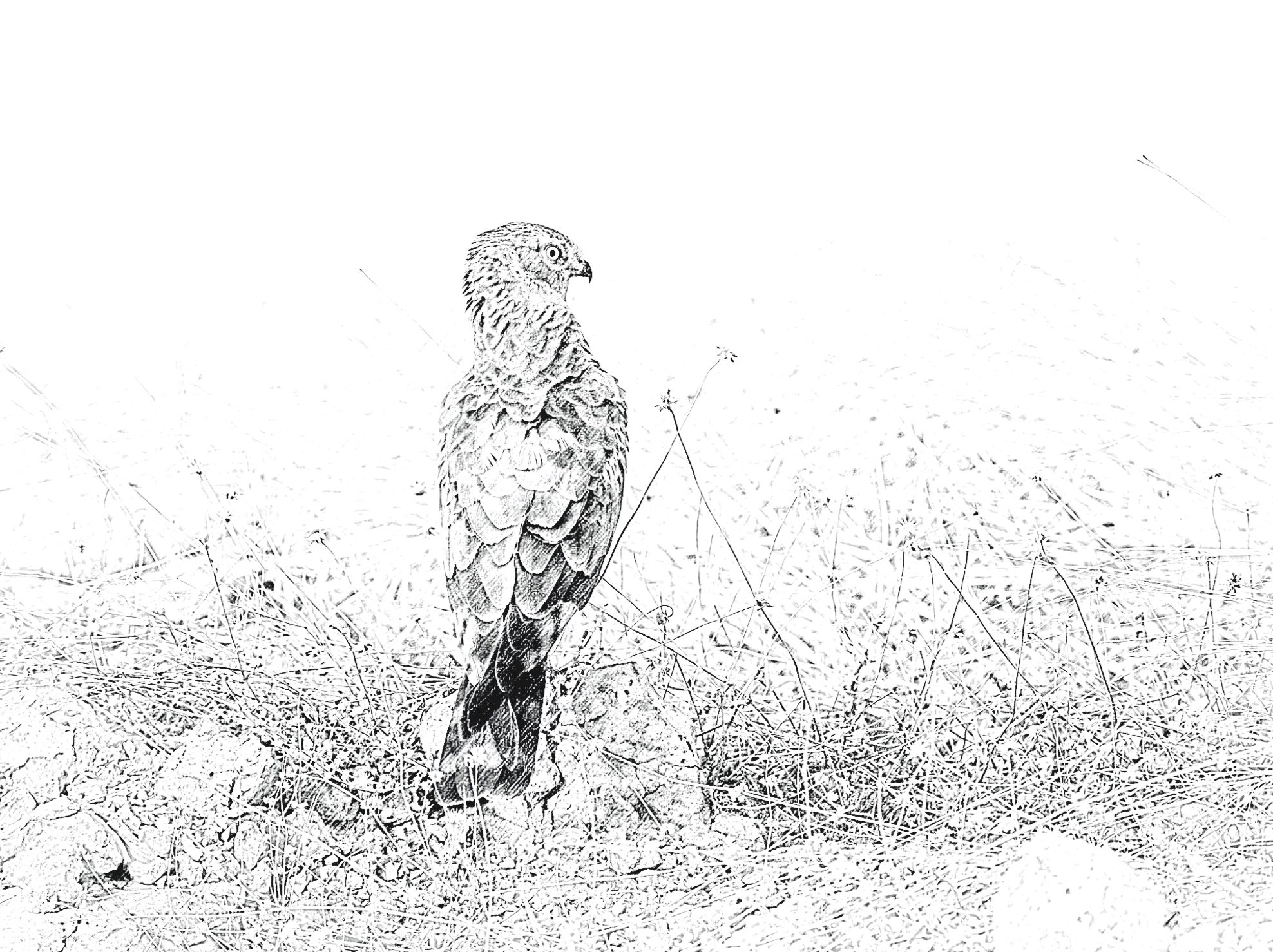Montagu's Harrier
Circus pygargus
The harriers of Kumbhargaon
The second of a three harrier series.
Bhigwan Bird Sanctuary
After the Pallid Harrier, this second chapter is on the equally striking Montagu’s Harrier inhabiting these lush grasslands. The area around the Birgundwadi area near Kumbhargaon are unique with rich farmlands and dry deciduous scrub forest with interspersed grasslands. Home to an impressive list of birds, mammals and reptiles they protect many mammals like the Chinkara, Hyena, Wolf and Indian fox and are also popular for grassland birds and the birds of prey, including the magnificent eagles I’ve talked about in earlier blogs.
Read about the eagles of Kumbhargaon here:
The endangered Steppe Eagle,
The vulnerable Greater Spotted Eagle and
The rare & also vulnerable Eastern Imperial Eagle.
The harriers are any of the several species of diurnal hawks sometimes placed in the subfamily Circinae of the bird of prey family Accipitridae. They characteristically hunt by flying low over open ground, feeding on small mammals, reptiles, or birds. The young of the species are sometimes referred to as ring-tail harriers. They are distinctive with long wings, a long narrow tail, the slow and low flight over grasslands and skull peculiarities. The harriers are thought to have diversified with the expansion of grasslands and the emergence of C4 grasses about 6 to 8 million years ago during the Late Miocene and Pliocene.
The genus Circus was introduced by the French naturalist Bernard Germain de Lacépède in 1799. Most harriers are placed in this genus. The word Circus is derived from the Ancient Greek kirkos, referring to a bird of prey named for its circling flight (kirkos, "circle"), probably the hen harrier. The name harrier is thought to have been derived either from Harrier (dog), or by a corruption of harrower, or directly from harry. Ring-tail is an informal term used by birders for the juveniles and females of several harrier species when seen in the field and not identifiable to an exact species. Ring-tail harriers include the juveniles and females of Montagu's harrier (Circus pygargus), Hen harrier (Circus cyaneus), and the Pallid harrier (Circus macrourus).
During our time here we were hosted by and had the expert help of Sandip Nagare and his team of knowledgeable guides from the Agnipankha Bird Watcher group, especially Ganesh Bhoi, who went out of their way to ensure we had fantastic opportunities to explore, discover, observe & photograph over 82 species of birds and wildlife including some rare ones. We stayed at Sandip’s homestay of the same name and had the added pleasure of indulging in delectable home cooked food.
With that as the prelude I have this blog on the Montagu’s Harrier as the second chapter of a three part series on the harriers of the Kumbhargaon grasslands. If you haven’t already, read the first chapter on the Pallid Harrier.
‡‡‡‡‡
The Montagu’s Harrier
The Montagu's harrier (Circus pygargus) is a migratory bird of prey of the harrier family. Its common name commemorates the British naturalist George Montagu. It is a lightly built hawk - slim, medium-sized, long-winged bird of prey - with rather narrow and somewhat tapered wings. It favours heathland, grassland, arable fields & marshes. It is mainly seen in flight, quartering fairly low with wings raised in shallow V; their flight is rather buoyant. It has a long tail, is smaller than a buzzard, and has more pointed wings than the similar hen harrier.
The male is a pale gray overall with black wingtips, clearly seen in the photo above, and can be confused with a gull but there is a narrow black bar on their upperwing. Compared with other harriers this species has characteristic black bands along the secondaries, both above and below the wing and rusty streaks on belly and flanks. The female can be differentiated from the Hen Harrier by their narrower wings and more buoyant flight while the juvenile is a bright rusty below. Some individuals are very dark overall. In the Pallid Harrier, from the first chapter, the males lack the black wing bars and rusty traces on the underparts of their Montagu's counterparts, while the Pallid females and juveniles average far paler in the face.
Montagu’s Harrier Range
A melanistic form occurs regularly in this species. In this form the male is much darker than usual, with a black head, brownish black above and grey underparts. The melanistic female is entirely chocolate brown except for grey flight feathers. Partially melanistic morphs can also be found.
The Montagu's harrier has a particularly graceful flight, with powerful and elegant wingbeats which give an impression of buoyancy and ease. In true harrier fashion it searches the countryside, flying low, and generally holds its wings with a marked positive dihedral.
This species has an extremely large range, and hence does not approach the thresholds for Vulnerable under the range size criterion (extent of occurrence <20,000 km2 combined with a declining or fluctuating range size, habitat extent/ quality, or population size & a small number of locations or severe fragmentation). Despite the fact that the population trend appears to be decreasing, the decline is not believed to be sufficiently rapid to approach the thresholds for Vulnerable under the population trend criterion (>30% decline over ten years or three generations). The population size is very large, and hence does not approach the thresholds for Vulnerable under the population size criterion (<10,000 mature individuals with a continuing decline estimated to be >10% in ten years or three generations, or with a specified population structure). For these reasons the species is evaluated as Least Concern.
The Kumbhargaon and Birgundwadi grasslands are abundant and rich and prime habitats for the Montagu’s and other harriers. But it is saddening to observe and watch hordes of tourists, “wildlife” & “bird“ photographers chase these birds in their cars all over the area. A few tracks cut across the grasslands but most drivers - quite a few in their personal cars - and this is based on what I observed during my time here - drive recklessly and dangerously over the grasslands, trampling the fragile ecosystem, refusing to listen to any reasoning. This included my driver who insisted on driving as close as possible to the harriers, more often than not, scaring them off. I had to finally tell him, quite emphatically, to desist and that we had sufficient focal length on our lenses and he didn’t need to get within a few feet of the birds for the sake of our photos. Getting the photo come what may does not justify chasing the bird and destroying their habitat. Also just because I have come their once does not mean that all means, ethical or otherwise, need to be employed to get as many photos as possible. One can always visit again when convenient.
Who’s to tell the other drivers, pushed to drive in such fashion by their clients? Those in their own cars - fancy ones with 4 wheel drives - literally race across the grasslands exhibiting what their 4WD can do but not realising that they are crushing, trampling and destroying all the grassland and the fragile ecosystems they support, all for the sake of a few photos shared on Instagram or Facebook. And they call themselves nature and wildlife lovers on social media.
If these grasslands are destroyed by such reckless trampling, these beautiful birds will no longer be seen, period! One can always get ‘the photo’ later, provided the habitats are maintained, and the birds return. I do not know if the “private” parties can be educated but the local drivers and guides can certainly be educated because this is their livelihood. I have observed and experienced this high degree of awareness in the guides and drivers of the Little and Great Rann of Kutch who try to maintain the fragile habitats so that tourists, bird watchers and wildlife lovers can visit many many times.
‡‡‡‡‡
The following are some photos of the male & female Montagu’s Harrier recorded at the Birgundwadi grasslands.
When the male was spotted there was a mad scramble to reach it first and by the time I got there the only angle left was from behind. Some patience and telepathic communication with the bird and he turned to give both profiles. We did get the chance to move a few feet closer but then retreated because the bird appeared to be agitated some.
The male was photographed in beautiful light and barring my position with respect to where the bird was I have no complaints. The female in the first photo below, however, was spotted much later as the light was fading and it was perched some distance from where I was parked. When I saw this to my left I was photographing the female Pallid Harrier which was about half the distance as the Montagu’s and to my front. The last two photos were made with almost no light and while we were on our way back out of the grasslands.
The grass was still catching a bit of light and I took a chance because digital noise usually affects the shadows which in these two cases was the distant background.
The following were shot at ISO 12,800 and 25,600 at a shutter speed of 1/640 and f8 a focal length of 1200mm.
I could have removed the 2x extender and only used the 600mm at f/4 and dropped the ISO but then the bird would have been tiny in the frame.
Canon 1Dx Mark 2 + EF 600mm f/4L IS III USM + EF 2x III; 1/640; f/8; ISO 12,800
Canon 1Dx Mark 2 + EF 600mm f/4L IS III USM + EF 2x III; 1/640; f/8; ISO 25,600
Canon 1Dx Mark 2 + EF 600mm f/4L IS III USM + EF 2x III; 1/640; f/8; ISO 25,600
The following footage was recorded on 12th February across the grasslands of Birgundwadi near Kumbhargaon. It is truly an honour and privilege to be able to get close to and watch these beautiful birds of prey.
For more videos: Video Shorts
Related Posts







